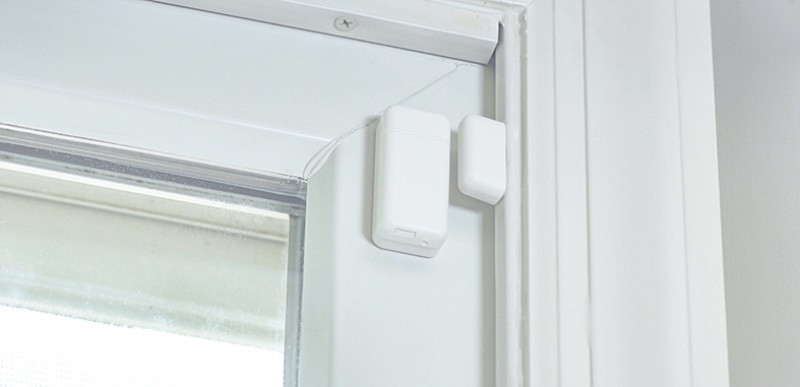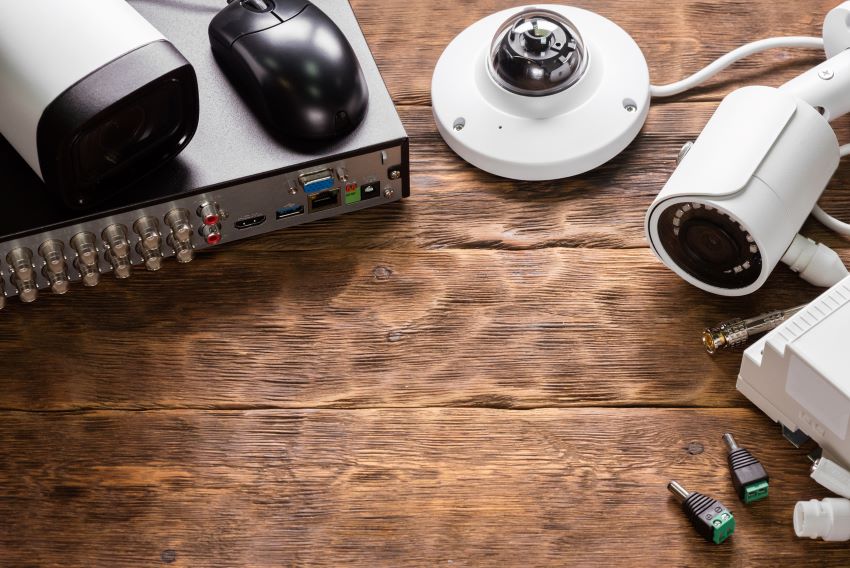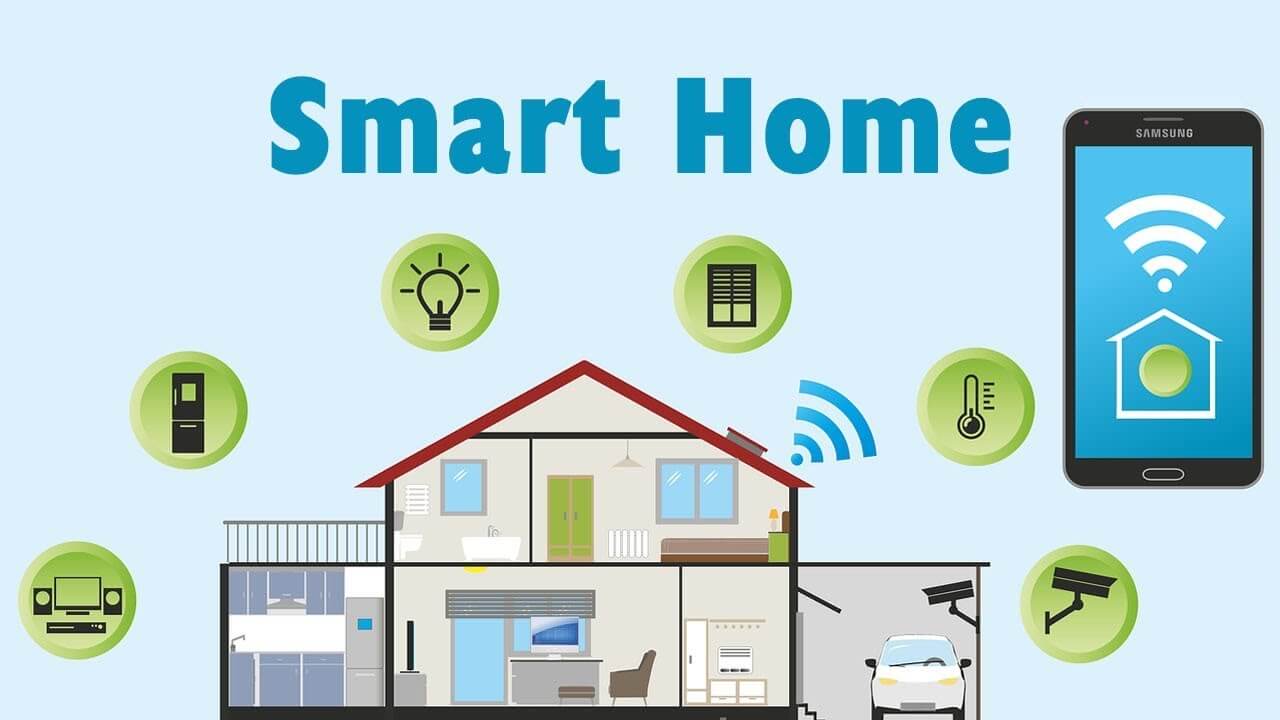Contents
- 1 The Importance of Door and Window Sensors in Home Security
- 2 What are Door and Window Sensors?
- 3 How do Door and Window Sensors Enhance Home Security?
- 4 Installation Process for Door and Window Sensors
- 5 Common Mistakes to Avoid When Using Door and Window Sensors
- 6 Integration with Other Security Systems
- 7 Frequently Asked Questions about Door and Window Sensors
- 8 Conclusion
The Importance of Door and Window Sensors in Home Security
As a homeowner, it’s important to keep your family and belongings safe from harm. One of the essential ways to achieve this is by installing a reliable security system in your home. While there are several components that make up a security system, door and window sensors play a critical role in keeping intruders out.
Simply put, door and window sensors are devices that detect when someone enters or exits through any entry point in your home such as doors or windows. They work by sending a signal to the control panel of the security system which will then trigger an alarm if the sensor is triggered while armed.
The importance of having these sensors installed cannot be understated. According to studies conducted by the National Crime Prevention Council, homes without any security systems are 300% more likely to be targeted by burglars than those with some form of security measures such as door and window sensors.
This means that investing in a reliable security system that includes door and window sensors can significantly lower your chances of being burglarized. Furthermore, it provides peace of mind knowing that you have an extra layer of protection safeguarding your home.
Another benefit is that certain insurance companies offer discounts on homeowners’ insurance premiums for those who have an alarm system installed. This means you can save money while also ensuring greater protection for your property.
In addition to providing protection against burglaries, door and window sensors can also alert homeowners of potential danger such as fires or gas leaks. Some advanced systems come equipped with temperature gauges which can detect extreme changes in temperature caused by fire or smoke, triggering an alarm instantly.
How Door and Window Sensors Work
Door and window sensors consist primarily of two parts: the magnet (which is attached adjacent to the sensor) and the sensor itself (which is mounted on the frame). When the two parts aren’t in close proximity, the sensor sends a signal to the control panel of the security system. Magnetic sensors can be either wireless or wired.
With wired sensors, there is a physical connection between the magnet and sensor (usually through a wire). Wireless sensors, on the other hand, use radio waves to communicate with your security system which makes installation easier as there are no wires that need to be run.
When an intruder attempts to open a door or window that has been fitted with these sensors, the magnetic connection is broken, and an alarm is triggered. The loud noise of an alarm will deter many burglars from attempting to break into your home or business.
Types of Door and Window Sensors Available in the Market
There are different types of door and window sensors available in the market today. One common type is contact sensors.
These are placed on doors and windows and work by detecting when they’re opened or closed. They’re relatively easy to install but come with some limitations as they won’t detect if someone breaks a window instead of opening it.
Another type is motion detectors which use infrared technology to detect heat signatures within their range. When motion triggers this detector, it sends a signal back to your security system which can then set off an alarm.
Then there are glass break detectors which recognize if a pane of glass has been shattered by detecting sound waves caused by breaking glass. They differ from contact sensors as they’re capable of detecting when someone breaks through a door or window even when it’s not opened.
Conclusion
Installing door and window sensors in your home can provide extra security for you and your family while giving you peace of mind knowing that your property is protected against burglary attempts among other things. With different types available depending on individual needs and preferences, it’s important to do research before making any purchases so that you can select one that suits your specific needs.
What are Door and Window Sensors?
Definition and Explanation of How They Work
When it comes to home security, door and window sensors are a crucial component. These sensors work by detecting the opening and closing of doors or windows in your home. They function through a simple process that involves two parts: a sensor placed on the door or window frame, and a magnet attached to the moving part of the door or window.
When a door or window is opened, the magnet moves away from the sensor, breaking the connection between them. This triggers an alarm that notifies you of any potential intrusion.
Door and window sensors come in different shapes, sizes, and types. Some are wired directly into your home’s security system, while others operate wirelessly through radio frequency (RF) signals or Bluetooth technology that is compatible with your smartphone.
Types of Sensors Available in The Market
There are several types of door and window sensors available on the market for homeowners to choose from:
- Magnetic Contact Sensors: These are the most common type of sensors used in home security systems. They typically consist of two components – one mounted on the stationary frame (the sensor), while another is attached to the movable part (the magnet).
When a door or window is opened, it breaks contact between these two pieces triggering an alarm.
- Vibration Sensors: These sensors detect any movement or vibration caused by someone trying to pry open a door or break through a window.
When sensing movement beyond normal vibrations such as passing vehicles outside your house, they trigger an alarm.
- Infrared Sensors: These use infrared radiation technology to detect body heat in motion which means if someone enters your house without your permission triggering detected motion in infrared radiation beams then it will trigger the alarm.
- Pressure Mats: These sensors are placed under rugs, carpet or floors and detect any pressure change when someone steps on them. When someone breaks the contact between the mat and the floor, it triggers an alarm.
Before selecting a door or window sensor, consider which type is suitable for your home and requirements. Make sure to get professional advice before installation to ensure optimal placement for each sensor.
How do Door and Window Sensors Enhance Home Security?
Preventing break-ins and theft
When it comes to securing your home, door and window sensors are a crucial component. These sensors work by detecting when a door or window is opened and if the security system is armed, it immediately alerts you or the monitoring company.
With this feature, you can rest assured that any attempted break-in will be detected, and you will be alerted in real-time. Door and window sensors can prevent break-ins because most burglars will try to enter through an unlocked window or door.
By using these sensors, any attempt at unauthorized entry is detected immediately. This not only helps prevent theft but also protects you from harm.
Alerting homeowners to potential danger
Another advantage of using door and window sensors is that they can alert homeowners to potential danger. For instance, if you have small children in your home who may wander out of doors or windows, these sensors will detect their movements. You will be notified promptly so that you can attend to them before anything dangerous happens.
Similarly, if an intruder attempts to break into your home while you are inside, the system will alert you immediately. This gives you time to take appropriate action such as calling the police or hiding in a safe area until help arrives.
Providing peace of mind
Knowing that your family and property are secure provides peace of mind for homeowners. Door and window sensors help protect your property even when no one is home by providing continuous monitoring 24/7. This means that no matter where you are or what time it is, if someone tries to enter your house without authorization the alarm will sound immediately.
This added layer of security ensures that both people and property remain safe from harm at all times. As a result, homeowners can go about their daily lives feeling secure and confident that their homes are adequately protected.
Conclusion
Door and window sensors are an essential part of any security system. They provide continuous monitoring and alert homeowners to potential danger, preventing break-ins and theft while providing peace of mind. With these sensors in place, you can take comfort in knowing that your family and property are protected around the clock.
Installation Process for Door and Window Sensors
DIY vs Professional Installation
When it comes to installing door and window sensors, homeowners can choose to do it themselves or hire a professional. DIY installation can be a cost-effective option, but it requires some technical knowledge and competency with using tools.
However, if the homeowner is unsure about their ability to install the sensors correctly, they may want to consider getting professional help. Professional installation involves contacting a security company that specializes in home security systems.
A technician will come to the home and install the sensors for a fee. While this option is more expensive than DIY installation, it can provide peace of mind knowing that the sensors are properly installed.
Tips for Proper Installation
Regardless of whether homeowners choose to install door and window sensors themselves or hire professionals, there are some tips they should follow:
1. Choose the right location: It’s important to place door and window sensors in strategic locations where they will detect any movement or changes in activity.
Sensors should be placed on every entry point of the house including windows on all floors.
2. Test the sensors:
Before considering installation complete, homeowners should test each sensor by opening and closing doors/windows or simulating an intrusion attempt from outside.
3. Ensure proper alignment:
Door and window sensors need to be correctly aligned with one another so that they work together effectively as one unit rather than multiple disjointed devices
4. Keep them clean:
Dust buildup can cause problems with sensor performance over time so ensure regular dusting.
5. Install backup batteries:
Sensors need power from electrical outlets or batteries; having batteries as backups ensures that they continue working during power outages. Proper installation of door and window sensors is crucial for ensuring effective home security systems both DIY installations as well as professionally installed ones require careful consideration of placement, alignment and testing to ensure safety.
Common Mistakes to Avoid When Using Door and Window Sensors
Not Testing the Sensors Regularly
One of the most common mistakes homeowners make when using door and window sensors is not testing them regularly. It’s important to test your sensors on a regular basis to ensure that they are working properly. If sensors are not tested regularly, they may fail when you need them most, leaving your home vulnerable to break-ins and theft.
Testing your sensors is simple. All you need to do is arm your security system and open each door and window that is connected to a sensor.
If the sensor is working properly, it should trigger an alarm in your security panel or on your mobile device. If the sensor does not trigger an alarm, it may be malfunctioning or improperly installed.
Placing Them in the Wrong Location
Another common mistake homeowners make when using door and window sensors is placing them in the wrong location. When positioning sensors, it’s important to consider the layout of your home and the potential entry points for intruders.
For example, placing a sensor too close to a heating vent or air conditioning unit can cause false alarms due to changes in temperature. Conversely, placing a sensor too far away from a frequently used entry point can leave that area vulnerable.
It’s also important to consider pets when positioning sensors. Small pets like cats and dogs may trigger motion detectors if they are allowed free roam of rooms with installed sensors.
Placing these types of sensors higher up on walls will help reduce false alarms caused by pets. When deciding where to place your door and window sensors, consult with an installation professional who can provide guidance based on your specific needs.
The Importance of Proper Installation
Proper installation of door and window sensors is crucial for their effectiveness in enhancing home security. Professional installation ensures that all components are placed correctly and that the sensors are connected to your security system properly. DIY installation may be tempting, but it can lead to incorrect placement and faulty connections.
It’s important to follow installation instructions carefully if you do decide to install sensors yourself. In addition, choosing the right type of sensor for each door and window is also important.
For example, some windows may require a magnet sensor while others may require a glass break sensor. By avoiding these common mistakes and ensuring proper installation, your door and window sensors can effectively enhance the security of your home.
Integration with Other Security Systems
Door and window sensors are a crucial part of any complete home security system. However, they work much better when combined with other security systems. Integrating door and window sensors with other security systems can create a comprehensive security system that can keep your home safe from various threats.
Connecting door and window sensors with other security systems
When integrating door and window sensors with other security systems, the most popular method is to connect them to an overall home alarm system. This will allow you to monitor your doors and windows for any activity even when you’re away from home.
The alarm will be triggered if someone tries to enter your property without permission. You can also integrate door and window sensors with smart homes technology, such as cameras or motion detectors.
If an intruder attempts to enter through a door or window, the cameras connected to the sensor will activate automatically. This ensures that you have visual evidence of any unauthorized entrance into your home.
Benefits of integration
The benefits of integrating door and window sensors with other home security systems are enormous. Firstly, it provides a comprehensive approach to protecting your property against various threats such as burglars, fires or gas leaks.
It ensures that any wrongful entry or suspicious activity is detected early enough before causing damage. In cases where an alarm is triggered due to unauthorized access through a door or window sensor, the integration allows for faster response times from emergency services when contacted by the monitoring company associated with your home security system.
The integration also allows for remote monitoring of the property via mobile devices or computers connected to the internet. You can keep an eye on what’s happening at home while away at work or on vacation without having physical access to the entire building.
In addition, integrating doors and window sensors with other security systems is cost-effective. It’s often cheaper than buying separate security systems for each room or area in your home.
Integration of door and window sensors with other security systems enhances the ease of use and convenience. Once everything is set up, you do not need to operate each system separately since all are connected.
Conclusion
Integrating door and window sensors with other home security systems can significantly improve the safety of your property. It creates a comprehensive approach to securing your home, enabling faster response times from emergency services, remote monitoring capabilities, cost-effectiveness and convenience. If you’re building a home security system from scratch or upgrading an existing one, integrating door and window sensors with other technologies should be a top priority.
Frequently Asked Questions about Door and Window Sensors
How do door and window sensors work?
Door and window sensors consist of two parts: the sensor itself and a magnet. The sensor is attached to the door or window frame, while the magnet is attached to the moving part of the door or window. When the sensor and magnet are separated, it triggers an alert to your security system, which then sends a notification to your smartphone or other device.
Can I install door and window sensors myself?
Yes, you can install most door and window sensors yourself. Many brands offer simple DIY installation instructions that involve using screws or adhesive tape to attach them to surfaces around your home. However, it’s important that you read the manufacturer’s instructions carefully before installation, as some models may require professional help.
What happens if my pet triggers a false alarm?
If you have pets in your home that are prone to triggering motion detectors or setting off alarms accidentally, you may want to invest in pet-friendly sensors. These will only trigger an alert if they detect movement from objects over a certain weight limit (usually around 50 pounds), allowing your furry friends free reign without compromising your security system.
Can I connect my door and window sensors with other smart devices?
Yes! Many modern security systems come equipped with smart home integration features that allow you to connect all of your devices together seamlessly. This includes everything from voice-activated assistants like Amazon Alexa or Google Assistant, to lights, thermostats, cameras, and more.
What should I do if my door or window sensor malfunctions?
If one of your sensors malfunctions for any reason (such as being knocked out of place), it’s important that you take action as soon as possible so that your security system stays up-to-date. In most cases, you can simply reset the sensor and reposition it according to the manufacturer’s instructions. If this doesn’t work, you may need to contact your security system provider for assistance in diagnosing and fixing the issue.
Conclusion
Door and window sensors are an essential component of any security system for homes or businesses. With their ability to detect motion and vibrations, they can alert homeowners to potential intruders, prevent break-ins and thefts, and provide peace of mind.
The benefits of having these sensors installed are numerous. By installing door and window sensors, homeowners can take a proactive approach to protecting their homes and loved ones.
They can be sure that they will be alerted at the first sign of danger, giving them time to take action before an intruder has the chance to do any damage. The installation process for these sensors is relatively easy and straightforward.
Homeowners can choose between DIY installation or hiring a professional service provider. However, it is crucial to ensure that the installation is done correctly in order to get the most out of the sensors.
One common mistake that many homeowners make when using door and window sensors is not testing them regularly. It is important to test these sensors periodically in order to check if they are functioning correctly.
Additionally, placing them in the wrong location can also lead to false alarms or missed alerts. Another benefit of door and window sensors is that they can be integrated with other security systems such as alarms or cameras.
This provides additional layers of protection for your home or business while making it easier for you to monitor your property remotely. Installing door and window sensors will enhance your overall security measures by providing added protection from potential intruders.
It provides you with peace of mind knowing that your property is protected at all times whether you’re home or away. Therefore it’s advisable that all homeowners invest in this essential security measure for better protection against burglars who may cause harm both physically as well as emotional distress due to loss of valuable assets worth years’ savings.











